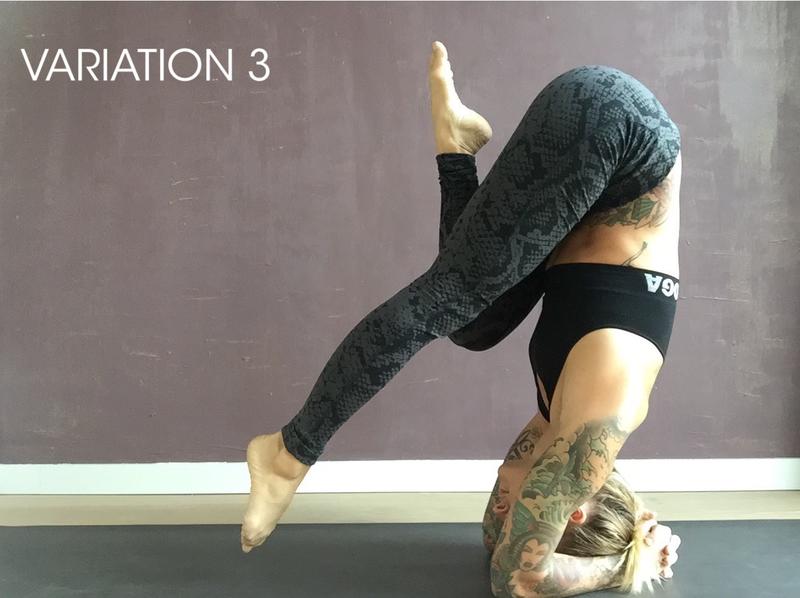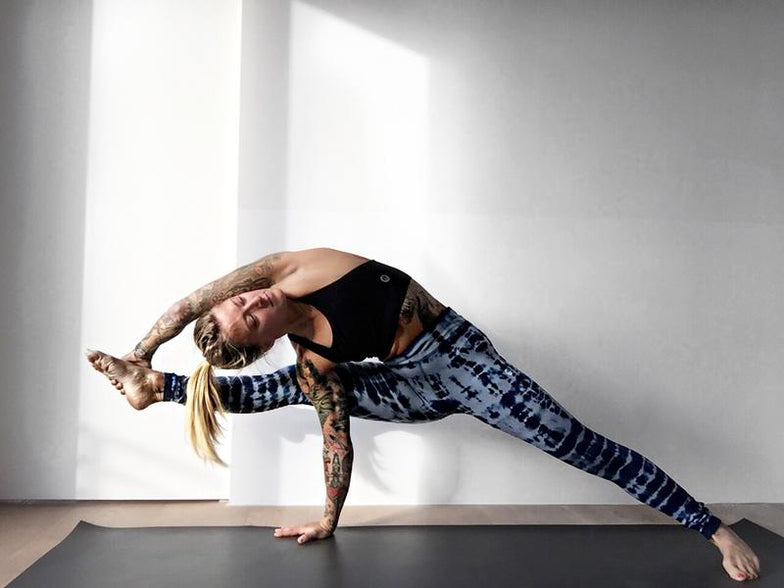In my new blog column I introduce you to my fascinating world of yoga and answer important questions about everything the modern yoga heart desires. These can be asanas, tips and tricks, common mistakes that we uncover using the AHA effect or recipes that are not only delicious but also healthy.

// NEVER JUMP INTO HEADSTAND //
Reversal postures fascinate us all. Even as a child you try it, more or less successfully. As soon as we have a negative experience, we block the topic completely and dismiss it as nonsense and extremely dangerous. Yes, the headstand can be very dangerous - if you don't understand it and the whole mystery surrounding it. Therefore: Safety first!
And that means that you simply have to heed the following basic rule:

If you can't slide into a headstand, i.e. shift your weight slowly and in a controlled manner, then you're not ready.
Point.
That sounds mean. I know. But it has a lot of meaning and is totally logical if you think about it for a moment. Compare the thickness and width of the vertebrae of the lumbar spine with the significantly smaller vertebrae of the cervical spine. That's actually almost enough information: the cervical spine is not really predestined to carry a lot of weight at once.
This means you need general body tension: you have to be able to stabilize your torso to protect your neck and, ideally in a connected headstand, build a base over your forearms to put as little weight on as possible to transfer the crown of the head.
When you jump, the following happens:
The entire body weight is suddenly and suddenly transferred to the shoulders and head. The body has to react suddenly and in a position where it requires a lot of concentration for most people to even orientate themselves and to know where what has to be moved in order to protect themselves. That's not a good place to spend a few minutes in a solid headstand.
In such a case, the following must be practiced beforehand (and this can sometimes take weeks or months!):
- A lot of core stability should be built up, for example by doing abdominal exercises
- Shoulder stability: you have to be able to feel whether the shoulders are moving towards the ears and whether the (e.g. dolphin) back muscles are strong enough to support the shoulders
- Dandasana, Paschimottanasana, Uttanasana should work relatively well
- the half headstand in all variations
STEP BY STEP - the half headstand
The half headstand is the be-all and end-all and should be the initial focus. You start with the individual structure of your arms in a connected headstand (interlace your fingers, place your forearms so close together on the mat that the sides of your head are almost on your forearms) and move your feet towards your head as much as possible.

VARIATION 1:
Here you can train your shoulder intelligence by repeatedly lifting your head off the ground using pressure from your forearms and gently laying it back.

VARIATION 2:
From half headstand, pull 1 leg towards your torso for 1-5 breaths. Pull your thigh as close to your stomach as possible. Think about a small ball rather than throwing your leg towards the ceiling. Important here: shoulders away from your ears. Then switch legs. Afterwards: pause in the child's posture.

VARIATION 3:
If it works well to pull one leg towards your torso, then you can repeat the same thing and try to pull the other foot closer to get a feeling for when your pelvis is at the center of gravity. Maybe your leg floats for a moment. Break. Repeat on the other side.

VARIATION 4:
Repeat variation 3 and pull both legs towards you. That's quite a headstand. With a concentrated load of power. You're a little bomb! Congratulations!

VARIATION 5:
From variation 3 (one leg pulled up), pull the stretched leg towards you until it floats and now stretch it towards the ceiling. You may find it easier to initially keep one leg bent to maintain more core tension. That's OK. Over time, stretch both legs towards the ceiling. Or:
From variation 4: slowly extend yourself over both legs towards the top into a full headstand.
Voila! Done. Remember to always take a break when you need it. As a counter pose, I recommend you practice a few rounds of Vinyasa with the cobra or updog or the fish.
Have fun practicing!
Nama’cray
I look forward to receiving feedback, comments and more at: www.facebook.com/kickassyoga or www.kickassyoga.net
